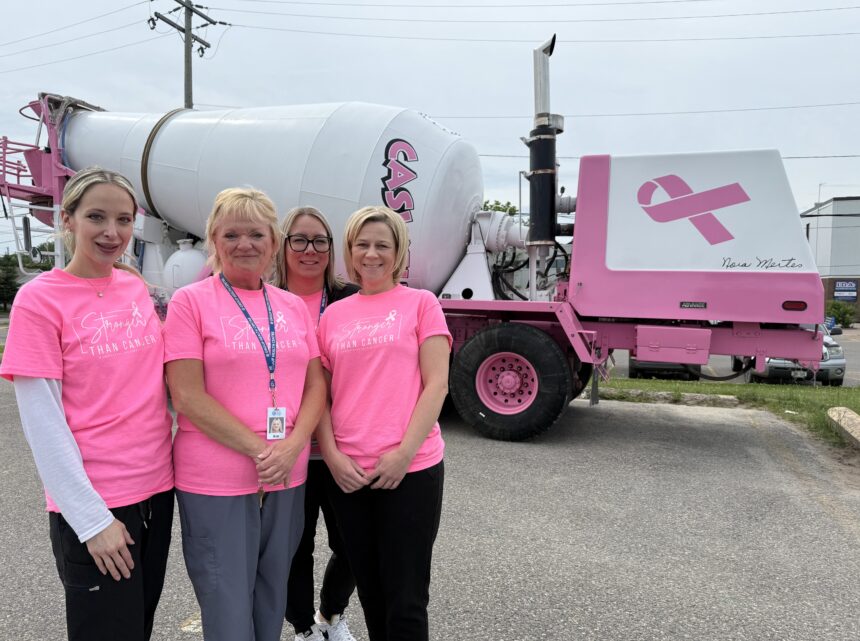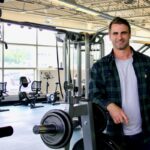As I stepped into the bustling corridor of the Group Health Centre in Sault Ste. Marie this morning, the atmosphere was charged with a unique energy. Women of all ages filled the waiting area, some chatting nervously, others scrolling through phones or flipping through outdated magazines. The annual Mammothon was underway, transforming a typically anxiety-inducing medical procedure into something that felt almost communal.
“I’ve been putting this off for three years,” confessed Elaine, a 58-year-old teacher who agreed to share her experience but preferred I use only her first name. “Something about making an appointment months in advance gives me too much time to worry and cancel. But this walk-in event? I just told myself I was doing it today, and here I am.”
The Group Health Centre’s Mammothon, now in its fifth year, offers same-day mammogram screenings to eligible women aged 50 to 74 who haven’t had a mammogram in the last two years. The concept is brilliantly simple: remove barriers to potentially life-saving care by eliminating wait times.
Dr. Jodie Stewart, lead radiologist at the centre, explained between patient consultations that early detection remains the most effective tool in fighting breast cancer. “When we catch breast cancer at stage one, the five-year survival rate exceeds 98 percent,” she told me, referencing data from the Canadian Cancer Society. “But that percentage drops significantly with each advancing stage. Our challenge isn’t just medical—it’s about access and overcoming hesitation.”
For many Northern Ontario women, particularly those in rural communities surrounding Sault Ste. Marie, healthcare access involves complex calculations of time off work, transportation costs, and childcare arrangements. The Algoma Public Health unit reports that screening rates in the region have consistently lagged behind provincial averages, with the pandemic further widening this gap.
Carol Pine, a volunteer greeter wearing a bright pink scarf, has been with the program since its inception. As a breast cancer survivor herself, she approaches each woman with the kind of understanding that comes only through shared experience.
“When I was diagnosed in 2015, I hadn’t had a mammogram in nearly five years,” she shared, adjusting her scarf. “I tell everyone who comes through those doors—ten minutes of discomfort could save your life. It saved mine, just a few years too late.”
The waiting room falls momentarily silent as a woman emerges from the screening area, giving a thumbs-up to her friend. This visual shorthand—the universal signal that the procedure wasn’t as bad as anticipated—ripples through the room, visibly easing tension among those still waiting.
While the Mammothon creates a uniquely supportive environment, the reality remains that breast cancer screening rates across Northern Ontario communities have struggled to recover from pandemic-era disruptions. Statistics Canada data shows that nationally, about 72% of eligible women undergo regular mammograms, but that percentage drops below 65% in many rural and northern communities.
Health equity researchers from the Northern Ontario School of Medicine have identified several factors beyond simple access that contribute to lower screening rates. Cultural sensitivity, previous negative healthcare experiences, and fear of results all play significant roles in screening hesitancy.
“We’re trying to address all these barriers simultaneously,” explained Tina Forsyth, the mammography program coordinator, as she guided me through the facility. “The walk-in aspect tackles access issues, but we’ve also worked hard to create an environment that feels less clinical and more supportive.”
The centre has transformed its mammography suite with soft lighting, nature photography, and privacy features that maintain dignity throughout the procedure. Technicians receive specialized training in trauma-informed care, recognizing that for many women, the vulnerability of the procedure can trigger anxiety or past traumas.
By mid-afternoon, the centre had already screened over 80 women, with several hours still remaining in the event. This single-day effort will potentially prevent advanced breast cancer cases that might otherwise have gone undetected for months or years.
“We see the direct impact immediately,” said Dr. Stewart. “Typically, we identify several abnormalities requiring follow-up during each Mammothon. For those women, this one day could quite literally be life-changing.”
What strikes me most, watching the steady flow of women through the screening process, is how the event transforms an individual medical procedure into a collective act of health empowerment. Women who have completed their mammograms often linger, offering encouragement to newcomers or sharing their experiences with friends they’ve convinced to attend.
As the afternoon progresses, I speak with Miriam, an Anishinaabe elder who traveled from Garden River First Nation for her screening. “In our communities, we often don’t talk about these things,” she explained. “But I bring my daughters and my sisters because our health is connected to our community’s health. When we care for ourselves, we care for our people.”
The Mammothon continues until 7 p.m., deliberately extending beyond typical working hours to accommodate women who couldn’t otherwise attend. The Group Health Centre plans to analyze participation data to continue refining its approach for future events, with a particular focus on reaching women from underserved populations.
As I prepare to leave, I notice Elaine from earlier, now sitting with a cup of tea in the post-screening area. “It wasn’t nearly as bad as I remembered,” she tells me with visible relief. “And now I don’t have to think about it for another two years.”
That simple statement perhaps best captures the program’s success: transforming a dreaded medical procedure into a manageable, even empowering, health practice. In a healthcare landscape often defined by wait times and complexity, the Mammothon offers a refreshingly straightforward approach: Come today. Get screened today. Perhaps save your life today.






